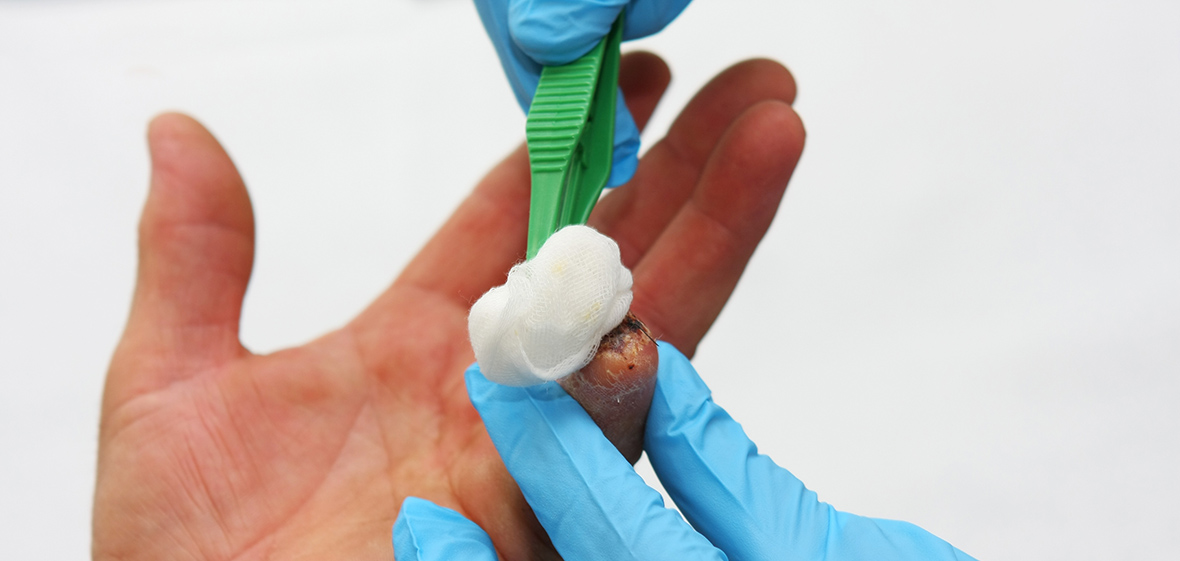
Disclaimer: This article is for patient information purposes only and does not recommend any treatment suggestions for any practitioners.
An amputation is one of the most traumatic events that can happen to the human body. An amputation means loss of blood supply to an extremity.
Even if the extremity is still attached to the body, but with no blood supply or poor blood supply present, we still refer to it as a devascularized extremity, or a subtotal amputation. If the amputated part is completely detached from the body, it is a total amputation.
Amputations can happen from the fingertips to the hands and from the hands to the shoulder blades. If there is no muscle involved, such as in the fingers, we call it a minor amputation. For cases involving muscles, such as the forearm or arm, we call it a major amputation.
When an amputation happens, multiple tissues are injured. The bones may be broken, the tendons can be cut, the nerves may be injured, the muscles can be crushed and skin continuity may be disrupted.
The blood supply to an extremity comes from the heart through arteries. The blood is collected by the veins and is returned to the heart.
Our body is amazing in the sense that there are usually two arteries that travel in an extremity and there are multiple communications between these two arteries, which allows blood circulation to be maintained even if one of the arteries fails. With an amputation, both arteries in the extremity are damaged and the blood supply is lost.
Knowing the difference between a minor amputation and major amputation is important because major amputation carries muscles, and muscles are overly sensitive to the loss of blood supply and having no oxygen. We call the loss of blood supply and lack of oxygen in a tissue ischemia. When the blood supply to the extremity is lost the clock starts ticking, and ischemia time starts.
Muscles can only endure staying without oxygen for six hours at most. An amputated part without muscle can stay without blood for up to 12 hours without deforming. This ischemia time is under normal weather conditions and is referred to as warm ischemia time.
If the weather is cold or if the extremity is placed on ice water, it could protect the amputated part and increase its tolerance to ischemia. By cooling the amputated part, it shifts the warm ischemia time to cold ischemia time.
If you end up suffering from an amputation, or encounter someone who has had a body part amputated, there are three important things to do.
- Basic life support should be given to the patient or yourself (if you are the patient). The environment should be secured and 911 should be called. The airway, breathing and cardiac status of the patient should be evaluated. If the patient is stuck in a machine, such as in a factory or in a piece of farm equipment, the machine should be turned off. Don’t try to remove the patient or yourself (if you are the patient) from the machine; leave that to the emergency medical team.
- Apply pressure to stop bleeding. If the patient is stable but bleeding from the amputated part, compression dressings should be applied to stop bleeding. This can be achieved with a clean towel or a piece of cloth by applying pressure on the bleeding wound.
- Secure the amputated part. The amputated part should be located and protected in a clean setting until EMS arrives. Dealing with a subtotal amputation may be more challenging as there will be bleeding, fractures and more pain involved. In that case, you can apply pressure and use a board to stabilize the extremity and place a bag filled with ice on the extremity.
When EMS arrives, they should stabilize the patient and preserve the amputated part. A tourniquet can be applied to stop bleeding but should be removed as soon as they apply a sterile compressive dressing. A prolonged tourniquet itself may cause damage to the nerves and make more body tissue go without oxygen.
The amputated part should be cleaned with saline, covered with sterile dressings and placed in a water-tight plastic bag. The plastic bag should be placed in a container that is filled with ice and water. In an ideal situation, the bag should be floating in ice water without touching the ice directly.
The patient should be transferred to a replantation center as soon as possible. If the patient must be transferred to a mid-level hospital, X-rays can be taken and basic blood tests can be done to facilitate operating room preparation at the replantation center. When the patient is transferred, all X-rays and tests should be given to EMS transferring the patient.
At our replantation center at UofL Health – Jewish Hospital, the Kleinert Kutz hand surgery team evaluates the patient for replantation in the emergency room first. Not all amputated parts may be suitable for replantation.
There are three mechanisms that result in an amputation: crush, avulsion (when the body part is pulled or torn away) and laceration (when the body part is cut away). Most amputations result from a combination of these mechanisms.
Replantation is considered after assessing the patients for their pre-existing conditions, their age, medicines they take, the time that has passed since the injury, the mechanism and the extent of the injury, the location of the amputation and the likelihood of function or dysfunction a replantation can deliver. Often, the part cannot be replanted or the patient may have a worse consequence if replanted. These patients should be given a revised amputation, which is a quick and better outcome for many patients.
If a decision is made to replant the amputated part, a team is formed including nurses, anesthesiologists, nurse anesthetists, surgical scrub technicians, circulating nurses and surgeons. Our surgeons not only have microsurgical skills but are also able to do replantation surgery.
An intravenous catheter is placed for administering fluids and medicines such as antibiotics and sedatives during the surgery. The extremity is numbed from the armpit down in most cases.
The patient is usually stable and continuously monitored during replant surgery. Patients may need blood transfusions at times, especially when a major replant is planned. The surgery may take multiple hours and a urinary catheter may also be placed.
The hand surgeons explore the amputated part and identify body structures. Veins, nerves and arteries are tagged on the recipient arm side and the amputated part side. Both sides are washed and covered with sterile drapes, and a tourniquet cuff is applied to the arm so blood does not go everywhere during the surgery.
Replantation starts with a clean-up and removal of the dirty and dead edges of the amputated part. The bones are usually fixed with pins, wires or a plate and screws.
The tendons get repaired, and then a microscope is used to see the arteries and connect them to each other using stitches that are as thin as hair. Then, the nerves and veins are attached using microsurgery.
Vein grafts can occasionally be used like an extra pipe connecting a gap between two pipes, to bridge arteries or veins. These extra veins can be harvested from the forearm with extended cuts. There may also be a need for skin grafts, and these can be taken from the forearm or other body parts.
After the surgery, the patient is kept in a warm room and monitored in the hospital for a few days. Monitoring the replant after surgery is critical to determine the success of a replant.
Failures can still happen up to three months after a replant.
Physical therapy can help patients regain function. Tendon and nerve rehabilitation takes several months. Despite possible complications, such as tendon adhesions, pain, bone issues and several psychosocial problems, patients and the surgeons are usually pleased with the good outcomes commonly achieved after a replantation.
Emergency Care for Limb Injury
- Call 24-hour emergency care for Louisville/Southern Indiana
504-561-4263 or 1-800-477-4263
If life-threatening, call 911. - No food or liquids for the patient, in case anesthesia is needed.
- Transport patient and severed part to a designated medical facility.
Amputated Limb
STEP 1
Slightly dampen a cloth, paper towel or gauze. Wrap the severed part in it.
STEP 2
Place the wrapped part in a clean plastic bag and seal the bag so that it is waterproof.
STEP 3
Wrap the end of the limb or digit snugly so the bleeding stops. Do not wrap so tightly that blood flow is cut off to healthy tissue.
Note: If excessive bleeding does not stop, raise the arm or leg high for a few minutes. Do not place clamps on any bleeding arteries or veins. If this does not work, apply a tourniquet to the upper arm or thigh. Release the tourniquet completely every 10 minutes for at least two to three minutes. If bleeding stops, do not reapply the tourniquet.
Partially Severed Limb
STEP 1
Wrap the limb or digit snugly with a gauze or elastic bandage so that bleeding stops, but not so tightly that blood flow is cut off to healthy tissue.
STEP 2
Splint the injured area by strapping it to a piece of rigid material. Place a regular ice pack on the injured area.









